Business
Saudis evict locals with lethal force to build ‘green’ city in line with globalist goals: report
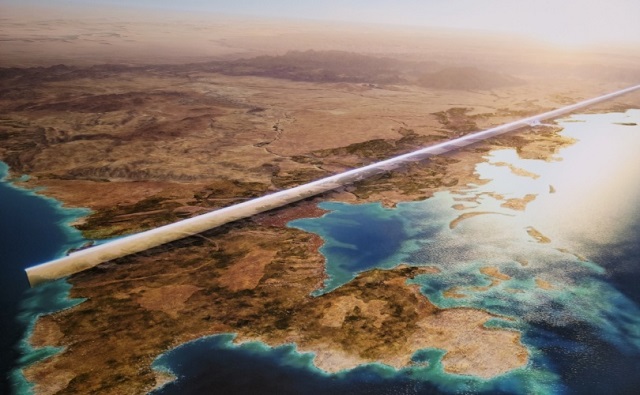
From LifeSiteNews
One villager who refused to relinquish his property reportedly was killed and 47 who wouldn’t leave have been arrested during the building of ‘The Line.’
Saudi Arabian officials have reportedly allowed the use of lethal force against local villagers to clear land to construct the “green” city named ‘The Line’ that is being built in conformity with globalist agenda-linked 2030 green plans with help from Western-based construction firms.
As per a recent BBC report, former Saudi Arabia intelligence officer Col Rabih Alenezi, who is now in exile in the United Kingdom for fear of his security, noted he was given orders to evict villagers from a local tribe to clear land for the ‘The Line’ project.
Reportedly, one person was shot and killed after refusing to leave the area. Abdul Rahim al-Huwaiti refused to let a land registry committee value his property and was shot by Saudi authorities one day later, when the clearance mission to evict the villagers was taking place. It was reported that he had posted videos on social media protesting the evictions.
As noted by the BBC, the Saudi state security at the time claimed that al-Huwaiti fired on security and that he was then shot in retaliation. However, human rights groups have said he was killed for refusing to leave the area and comply with eviction orders.
While the BBC noted that it was not able to “independently verify Col Alenezi’s comments about lethal force,” it said a “source” who was familiar with the inner workings of Saudi intelligence told them that Alenezi’s testimony about the clearance mission, as well as the details about it, were accurate in terms of that such clearance missions entail.
Another 47 villagers have been arrested for not going along with evictions, many of them being leveled terrorism-related charges.
Alenezi noted that he does not regret his decision to ignore his clearance orders for the project, saying, “Mohamed Bin Salman will let nothing stand in the way of the building of Neom.”
“I started to become more worried about what I might be asked to do to my own people,” he noted.
‘The Line’ is the flagship “green” project of what is known as Neom, a $1.5 trillion development on the area’s Red Sea. It is being built as part of Saudia Arabia’s 2030 strategy, which looks to move the kingdom’s economy away from oil and its vast reserves.
‘The Line’ is in lockstep with United Nations’ 2030 Agenda for Sustainable Development, which includes phasing out coal-fired power plants, reducing fertilizer usage, and curbing natural gas use over the coming decades.
The reduction and eventual elimination of the use of so-called “fossil fuels” and a transition to unreliable “green” energy has been pushed by the World Economic Forum (WEF), the globalist group behind the socialist “Great Reset” agenda that also promotes population control.
“The Line’ itself is a 170-kilometer-long “car-free” city that is in the northwest of the Gulf country, according to renderings. It will “run into the Red Sea,” where an extension of its structure will serve as a port for ships.
The Neom project is being built by dozens of global construction companies, many of them Western based. According to an analysis conducted by the BBC, satellite images show that three villages’ schools, and hospitals have been demolished to make way for the project.
Future of ‘Dystopian’ project in doubt
‘The Line’ project is being built based on the Saudi Arabian legal system, which is mostly based on Muslim sharia law that criminalizes anyone who “challenges, either directly or indirectly, the religion or justice of the King or Crown Prince. According to Amnesty International, two of 81 men executed by the Saudi Arabian government in 2022 were “convicted of crimes related to their participation in violent anti-government protests.”
When plans for ‘The Line’ were revealed, its promo video noted, “For too long, humanity has existed within dysfunctional and polluted cities that ignore nature. Now, a revolution in civilization is taking place.”
However, the future of the 170-kilometer-long project remains in doubt.
As per a recent Bloomberg report, it appears that only a 2.4-kilometer portion will be completed by 2030, according to a source familiar with the project.
Plans to have 1.5 million residents living in ‘The Line’ will not pan out as planned, sources said, and it is expected there will be less than 300,000 when the project finally comes online.
Some commentators slammed the project as “dystopian,” with one describing it as a “blatant greenwashing PR exercise by the heads of this rotten regime,” pointing out that “it’s an attempted distracting cop-out” since “Saudi Arabia is still at the very bottom for human rights (just pick next to women, any minority).”
Tech blog Engadget has raised concerns that The Line “is expected to be loaded with countless sensors, cameras, and facial recognition technology that in such a confined space could push government surveillance to almost unthinkable levels.”
Business
‘Context Of Chemsex’: Biden-Harris Admin Dumps Millions Into Developing Drug-Fueled Gay Sex App
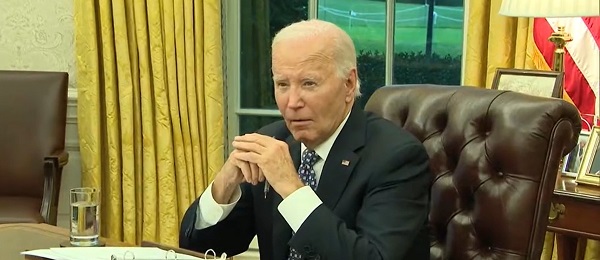
 From the Daily Caller News Foundation
From the Daily Caller News Foundation
By Owen Klinsky
The Biden-Harris administration is spending millions funding a project to advise homosexual men on how to more safely engage in drug-fueled intercourse.
The University of Connecticut (UCONN) in July announced a five-year, $3.4 million grant from the U.S. National Institute of Health (NIH) for Assistant Professor Roman Shrestha to develop his app JomCare — “a smartphone-based just-in-time adaptive intervention aimed at improving access to HIV- and substance use-related harm reduction services for Malaysian GBMSM [gay, bisexual, and other men who have sex with men] engaged in chemsex,” university news website UCONN Today reported. “Chemsex,” according to Northern Irish LGBTQ+ nonprofit the Rainbow Project, is the involvement of drug use in one’s sex life, and typically involves Methamphetamine (crystal meth), Mephedrone (meth), and GHB and GBL (G).
Examples of the app’s use-cases include providing a user who has reported injecting drugs with prompts about ordering an at-home HIV test kit and employing safe drug injection practices, UCONN Today reported. The app is also slated to provide same-day delivery of HIV prevention drug PrEP, HIV self-testing kits and even a mood tracker.
“In Malaysia, our research has indicated that harm reduction needs of GBMSM [gay, bisexual, and other men who have sex with men] engaged in chemsex are not being adequately met,” Shrestha told UCONN Today. “Utilizing smartphone apps and other mHealth tools presents a promising and cost-effective approach to expand access to these services.”
Homosexuality is illegal in Malaysia and is punishable by imprisonment, according to digital LGBTQ+ rights publication Equaldex. Drug use, including of cannabis, is illegal in Malaysia, and drug trafficking can be a capital offense.
The Old Border Czar VS The New Border Czar pic.twitter.com/9Ie8JRsroR
— Daily Caller (@DailyCaller) November 12, 2024
The NIH disbursed $773,845 to Shrestha in July to conduct a 90-day trial testing the efficacy of JomCare among 482 chemsex-involved Malaysian gays. It also provided Shrestha with $191,417 in 2022 to “facilitate access to gender-affirming health care” for transgender women in the country.
“Gender-affirming care” is a euphemism used to describe a wide range of procedures, including sometimes irreversible hormone treatments that can lead to infertility as well as irreversible surgeries like mastectomies, phalloplasties and vaginoplasties.
Shrestha has a track record of researching mobile health (mHealth) initiatives for foreign homosexuals, co-authoring a 2024 study entitled, “Preferences for mHealth Intervention to Address Mental Health Challenges Among Men Who Have Sex With Men in Nepal.”
The proliferation of LGBT rights has been a “foreign policy priority” under the Biden-Harris administration, a State Department spokesperson previously told the Daily Caller News Foundation, with President Joe Biden instructing federal government department heads to “to advance the human rights of LGBTQI+ persons.”
“Around the globe, including here at home, brave lesbian, gay, bisexual, transgender, queer, and intersex (LGBTQI+) activists are fighting for equal protection under the law, freedom from violence, and recognition of their fundamental human rights,” a 2021 White House memorandum states. “The United States belongs at the forefront of this struggle — speaking out and standing strong for our most dearly held values.”
President-elect Donald Trump announced on Nov. 12 that Elon Musk and Vivek Ramaswamy would collaborate to establish a new Department of Government Efficiency (DOGE), with Musk claiming the agency would feature a leaderboard for the “most insanely dumb spending of your tax dollars.” Some DOGE cuts could come from LGBTQ+ programs, such as a grant from the United States Agency for International Development to perform sex changes in Guatemala and State Department funding for the showing of a play in North Macedonia entitled, “Angels in America: A Gay Fantasia on National Themes.”
“The woke mind virus consists of creating very, very divisive identity politics…[that] amplifies racism; amplifies, frankly, sexism; and all of the -isms while claiming to do the opposite,” Musk said at an event in Italy in December 2023, according to The Wall Street Journal. “It actually divides people and makes them hate each other and hate themselves.”
Shrestha and the NIH did not respond to requests for comment. When reached for comment, a UCONN spokeswoman told the Daily Caller News Foundation that, “specific questions about the grant and the decision to award it to our faculty member should be directed to the NIH, since that’s the funding agency.”
Business
Broken ‘equalization’ program bad for all provinces
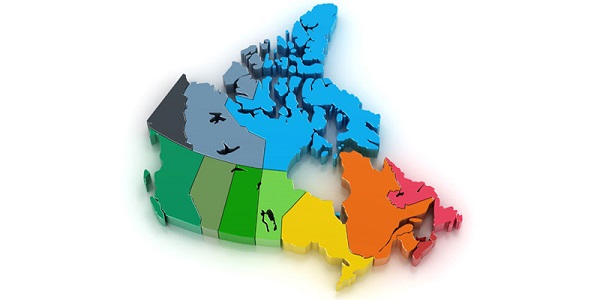
From the Fraser Institute
By Alex Whalen and Tegan Hill
Back in the summer at a meeting in Halifax, several provincial premiers discussed a lawsuit meant to force the federal government to make changes to Canada’s equalization program. The suit—filed by Newfoundland and Labrador and backed by British Columbia, Saskatchewan and Alberta—effectively argues that the current formula isn’t fair. But while the question of “fairness” can be subjective, its clear the equalization program is broken.
In theory, the program equalizes the ability of provinces to deliver reasonably comparable services at a reasonably comparable level of taxation. Any province’s ability to pay is based on its “fiscal capacity”—that is, its ability to raise revenue.
This year, equalization payments will total a projected $25.3 billion with all provinces except B.C., Alberta and Saskatchewan to receive some money. Whether due to higher incomes, higher employment or other factors, these three provinces have a greater ability to collect government revenue so they will not receive equalization.
However, contrary to the intent of the program, as recently as 2021, equalization program costs increased despite a decline in the fiscal capacity of oil-producing provinces such as Alberta, Saskatchewan, and Newfoundland and Labrador. In other words, the fiscal capacity gap among provinces was shrinking, yet recipient provinces still received a larger equalization payment.
Why? Because a “fixed-growth rule,” introduced by the Harper government in 2009, ensures that payments grow roughly in line with the economy—even if the gap between richer and poorer provinces shrinks. The result? Total equalization payments (before adjusting for inflation) increased by 19 per cent between 2015/16 and 2020/21 despite the gap in fiscal capacities between provinces shrinking during this time.
Moreover, the structure of the equalization program is also causing problems, even for recipient provinces, because it generates strong disincentives to natural resource development and the resulting economic growth because the program “claws back” equalization dollars when provinces raise revenue from natural resource development. Despite some changes to reduce this problem, one study estimated that a recipient province wishing to increase its natural resource revenues by a modest 10 per cent could face up to a 97 per cent claw back in equalization payments.
Put simply, provinces that generally do not receive equalization such as Alberta, B.C. and Saskatchewan have been punished for developing their resources, whereas recipient provinces such as Quebec and in the Maritimes have been rewarded for not developing theirs.
Finally, the current program design also encourages recipient provinces to maintain high personal and business income tax rates. While higher tax rates can reduce the incentive to work, invest and be productive, they also raise the national standard average tax rate, which is used in the equalization allocation formula. Therefore, provinces are incentivized to maintain high and economically damaging tax rates to maximize equalization payments.
Unless premiers push for reforms that will improve economic incentives and contain program costs, all provinces—recipient and non-recipient—will suffer the consequences.
Authors:
-

 ESG2 days ago
ESG2 days agoCan’t afford Rent? Groceries for your kids? Trudeau says suck it up and pay the tax!
-

 John Stossel2 days ago
John Stossel2 days agoGreen Energy Needs Minerals, Yet America Blocks New Mines
-

 Alberta2 days ago
Alberta2 days agoProvince considering new Red Deer River reservoir east of Red Deer
-

 Daily Caller2 days ago
Daily Caller2 days agoLos Angeles Passes ‘Sanctuary City’ Ordinance In Wake Of Trump’s Deportation Plan
-

 Addictions2 days ago
Addictions2 days agoBC Addictions Expert Questions Ties Between Safer Supply Advocates and For-Profit Companies
-

 Aristotle Foundation1 day ago
Aristotle Foundation1 day agoToronto cancels history, again: The irony and injustice of renaming Yonge-Dundas Square to Sankofa Square
-
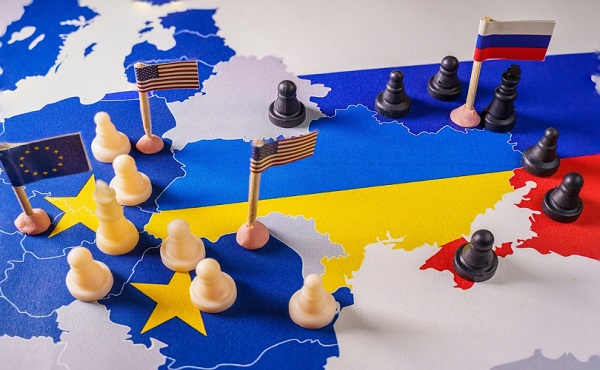
 conflict1 day ago
conflict1 day agoUS and UK authorize missile strikes into Russia, but are we really in danger of World War III?
-
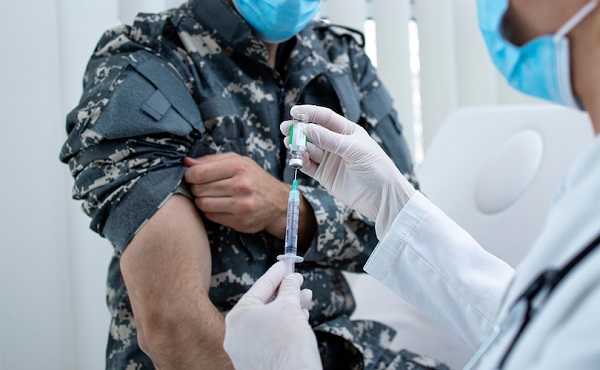
 armed forces1 day ago
armed forces1 day agoJudge dismisses Canadian military personnel’s lawsuit against COVID shot mandate






